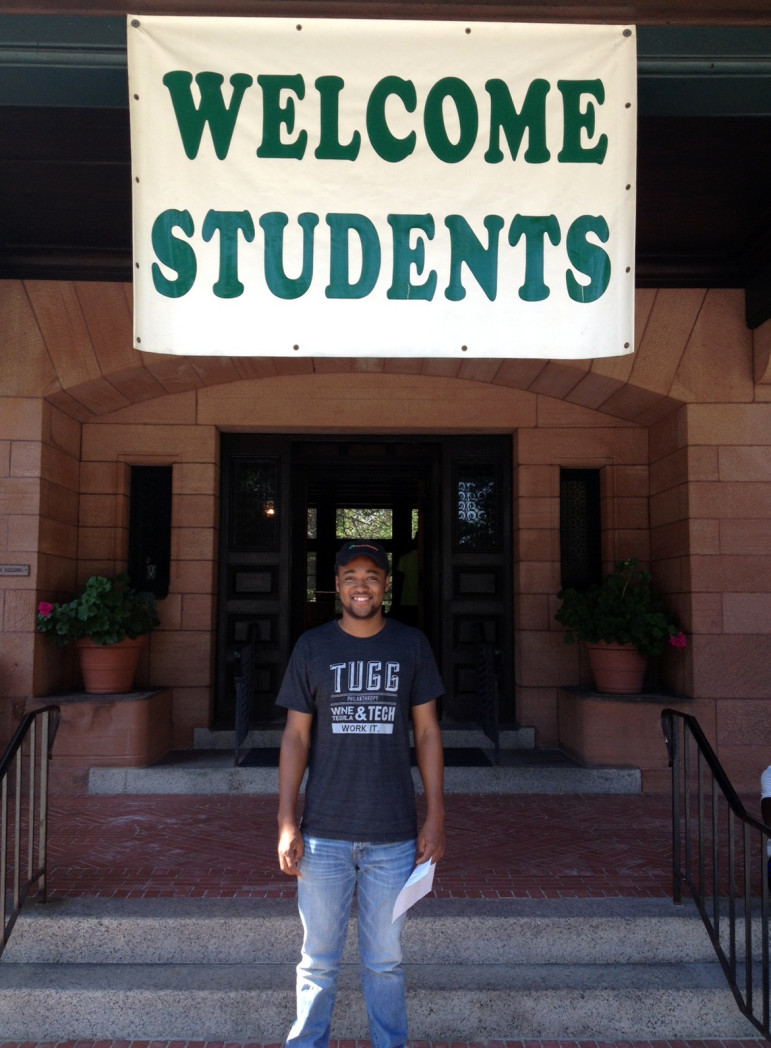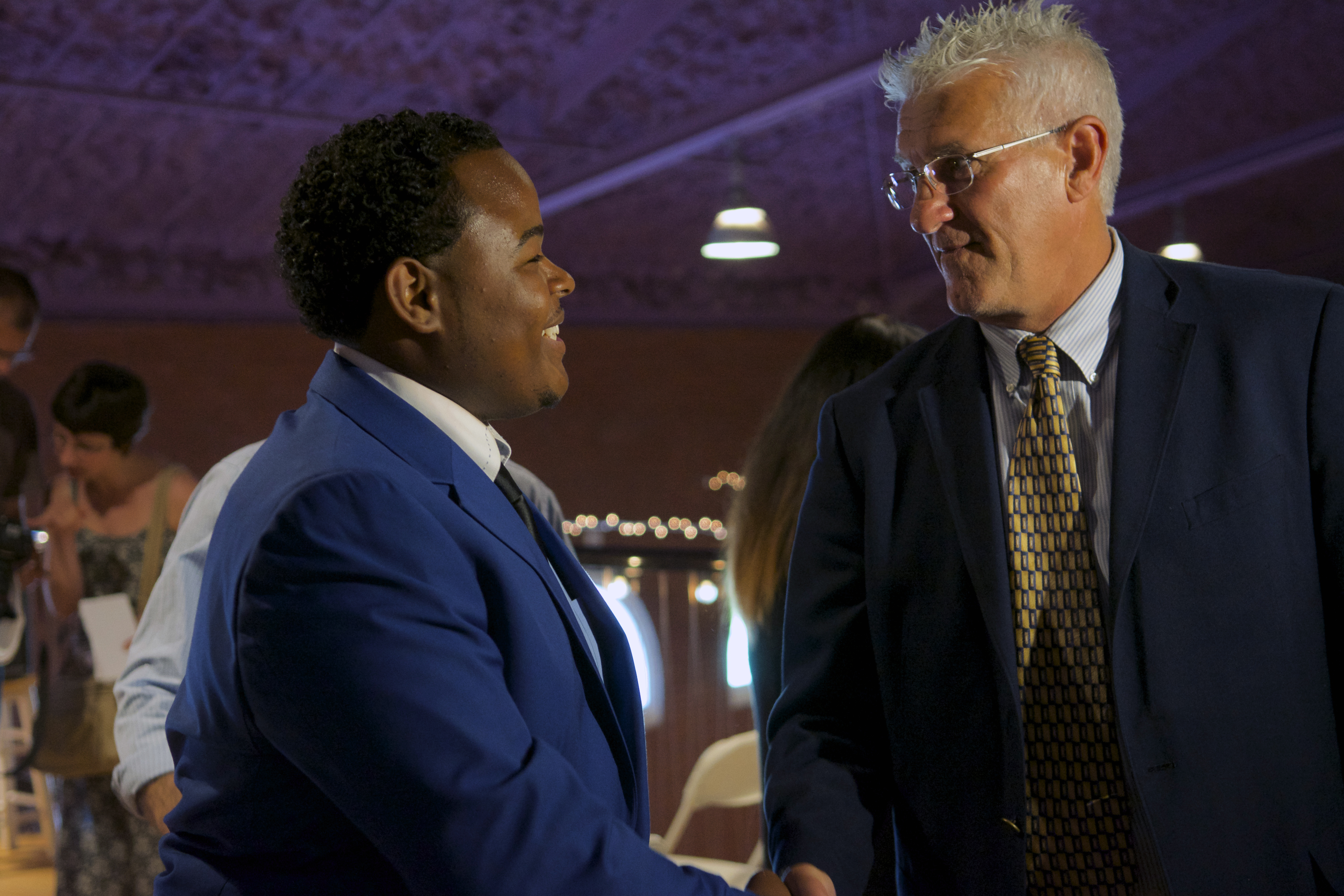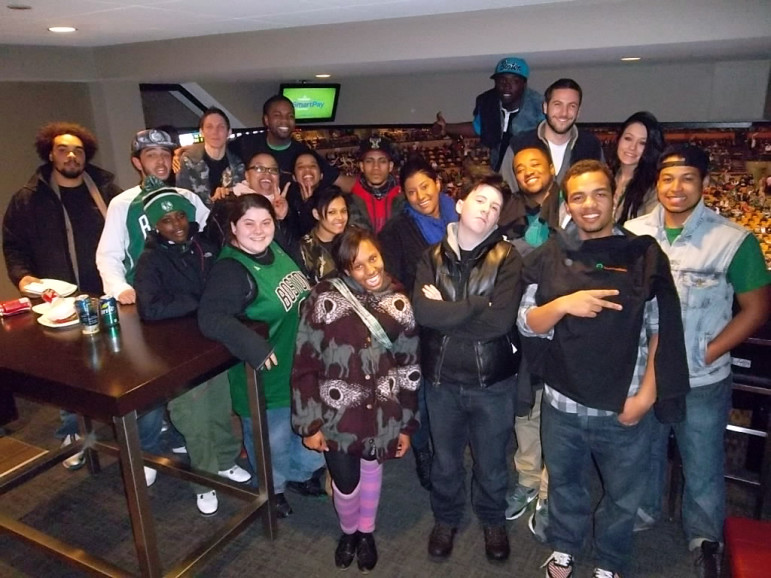A year ago, a 20-year-old man swallowed his pride and walked into the high school he had left twice before. While peers two, three and four years younger made small talk with him, guidance counselors and teachers regarded him skeptically. They had spent years offering this student opportunities he wasn’t ready to take.
Marquis Murray was unemployed, with a history of false starts and disappointments. He’d spent months couch-surfing at friends’ houses, working only rarely. He had a child but was not living with the girl or the girl’s mother.
Marquis’ father had a restraining order against him because of a physical altercation. His mother, struggling with her own challenges, had kicked him out of her home. Unfortunately, Marquis’ story is one variation among thousands of those of unaccompanied youth under age 25 experiencing homelessness in Massachusetts.
Youth Homelessness
Nationally, the extent of the problem of homelessness among youth is difficult to gauge because solid data is hard to come by. A 2007 report by the Urban Institute stated that between 300,000 and 400,000 youth ages 12 to 17 are homeless on any given day.
Perhaps the best data on unaccompanied youth homelessness in Massachusetts is provided by the state Department of Elementary and Secondary Education. The agency’s estimate of 5,000 unaccompanied homeless students, however, excludes homeless young adults who are disconnected from school or in post-secondary institutions.
In short, data demonstrating the scale of unaccompanied youth homelessness is still largely unknown. What is known from the community of providers working with this population is the acute need for permanent housing solutions for both unaccompanied children and young adults.
Our national commitment is to end youth homelessness by 2020. As the United States Interagency Council on Homelessness, research and policy center Chapin Hall and philanthropists research effective housing strategies, we must recognize two critical facts about this population.
The first is the complexity of their developmental stages. Our current system for addressing the needs of the homeless has two boxes — children and adults. Unaccompanied youth ages 18 to 24 may be legally adults but are still developing. They require distinctively different supports to reach their potential than our system for homeless adults provides.
[Related: Advocates Say Homeless Student Numbers Point to Need for New Definitions]
The Homeless Experience for Youth
How can we expect young people who are worried about where they will sleep that night, where their next meal will come from or whom they can trust, to focus on their schoolwork, learn or plan for their future?
Second, their homelessness is symptomatic of their disconnection from family. Part of our response must be an emphasis on family mediation whenever possible for both children and young adults. In Marquis’ case, the dropout prevention coordinator at his high school referred him to YouthHarbors, which partners with six area high schools to identify and support students ages 18 to 21 who are homeless and unaccompanied or at risk of becoming so.
Like many programs nationally, YouthHarbors first assesses the student’s most immediate needs. On any given day this may be food, clothing or shelter. In Marquis’ case, we provided clean socks, underwear, food and a place to shower.
Families typically provide a stable place to live, relentless encouragement and help navigating the world. Marquis had none of this, nor do most of the young people in his position across the nation.
It’s easy to ask why unaccompanied young adults like Marquis would go without a shower, food or a place to stay when they have family nearby. But for them, asking for help from family can be terrifying. Often, these relationships are so strained, young people have adapted to avoid rejection and maintain their self-esteem.
Family Preservation versus Alienation
Some human services providers simply conclude that, after age 18, family relationships are frayed beyond repair. To us, that evades the most critical aspect of work with unaccompanied young adults. YouthHarbors seeks first to explore the possibility of reconnection or stabilization with family.

A graduate of the YouthHarbors program moves into his college dorm with the support of, and assistance from, YouthHarbors staff.
Exploring the reasons behind a young person’s alienation from family often leads to a deeper understanding of how to support him or her.
Although Marquis couldn’t live with his father, we sensed an opportunity for him to reconnect with his mother, and he allowed me to speak with her about their challenges. For several months, Marquis and I worked on family mediation, food security, a job, budgeting, transportation, clothing and a free membership to a local YMCA.
In time, Marquis was able to move back in with his mother, providing a more stable living situation for himself, and also contributing to her housing stability.
Of course, rebuilding family ties is not always possible or appropriate. Many young adults will require developmentally appropriate housing options, including youth-specific shelter, transitional housing programs, room rentals and host homes.
However, Marquis’ story and others demonstrate that, if we are to truly end youth homelessness, one piece of our national housing continuum must include family preservation for young adults.
Strengthening these relationships in the months and years ahead will benefit Marquis long after his memories of YouthHarbors fade.
This past summer, a now 21-year-old Marquis graduated from both high school and the YouthHarbors program, with his 2-year-old daughter, fiancee, mother, father and myself cheering him on.
Sam Margolius is program manager for YouthHarbors, a Program of Rediscovery, a division of Justice Resource Institute, based in Needham, Massachusetts.
More related articles:
TANF Helps Support Homeless Families
Counting the Homeless Kids in Atlanta
Disadvantaged Youth Education and Development Grants
































